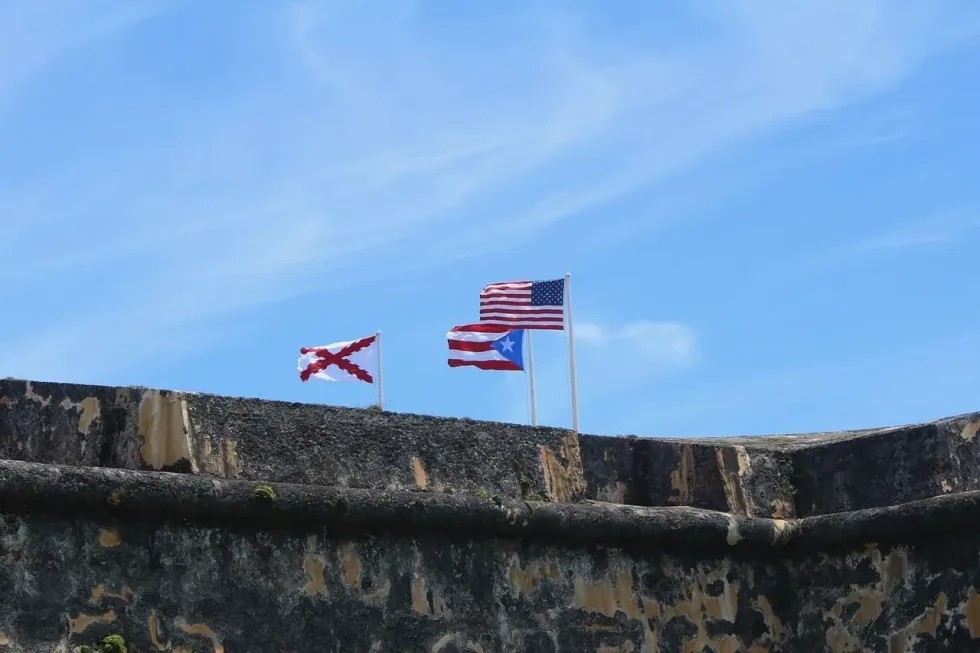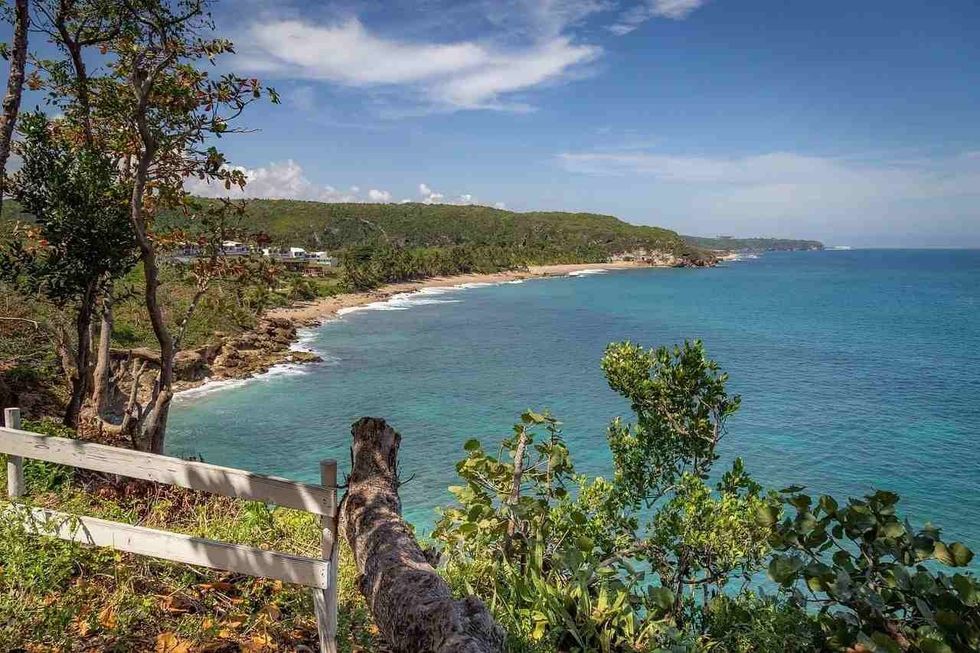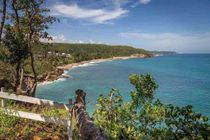35 Historical Facts About Puerto Rico That Are Absolutely Astonishing

Puerto Rico is the easternmost island in the Caribbean, and it is rich in history and culture.
It comes under the territory of the United States of America and lies in the Northeast Caribbean Sea. The Puerto Rico trench is located between the Caribbean Sea and the Atlantic Ocean.
Despite it being a territory of the USA, Puerto Rico revels in its historical Spanish traditions. 'Arroz con gandules y lechón' is the national dish of Puerto Rico.
Puerto Rico is full of vibrant, passionate people who love their culture. It is also a mine of natural resources. In this article, we will learn about Puerto Rico’s cultural heritage, how it became a Spanish settlement, and other exciting things about the place.
The history of Puerto Rico has been quite interesting. Puerto Rico was inhabited by native hunter-gatherers for more than a millennium before the Spanish people arrived on the island. So, they can be regarded as the first Puerto Ricans. Afterward, Arawak Indians also settled in Puerto Rico at around 1000 CE and developed the Taino culture.
The Taino culture featured different clans who used to live in numerous small villages and were led by a chief. Despite their extremely limited knowledge regarding the concepts of agriculture, the Taino were able to grow various tropical crops that had been domesticated. Their diet features cassava, pineapples, sweet potatoes, and a variety of seafood.
Experts have suggested that around the late 15th century, anywhere between 20,000-50,000 Taino people resided in Puerto Rico. The Taino were also able to stave off persistent attacks from their various neighbors in the Caribbean Sea, including the Vieques Island, and the Virgin Islands located towards the south and east of Puerto Rico.
The location of Puerto Rico in the Caribbean Sea makes it susceptible to different types of weather phenomena. The tropical climate of this territory has seen the coldest day with a temperature of 38 F (3 C). Powerful hurricanes have ravaged the island numerous times in the past, and the territory is exposed to several hurricanes every year.
Hurricane Maria was a category five hurricane, that was accompanied by winds with speeds of up to 150 mph (225 kph). One of the most destructive hurricanes to ever hit Puerto Rico was Hurricane Maria. The economic impact of Hurricane Maria was quite considerable.
The ferocity of the hurricane destroyed the power and communication infrastructure on the entire island. Flash floods induced by Hurricane Maria destroyed numerous buildings and roads on the island.
Most of the crops were destroyed, and agricultural land was also severely affected by the hurricane. It took the authorities several months to restore power to the entire island, during which time, people struggled with access to potable water and hygienic living conditions.
The entire population of the island, that is, around 3.5 million Americans, faced a severe humanitarian crisis as the economy of the island was ravaged by the aftermath of the hurricane, and the losses were pegged at around $90 billion. A shortage of food, water, fuel, and an uncertain future beckoned the citizens.
Since then, the economy of the island, with considerable support from the mainland US, has been moving towards normalcy. The US Congress approved more than $63 billion for recovery and rebuilding efforts.
Did you know that Juan Mari Brás was the first person to receive Puerto Rican citizenship in the year 2006? If you are curious to learn more, then keep reading!
After reading about the history of Puerto Rico and its presidential elections, also check facts about the history of Beijing and Brazil history facts.
History And Heritage
When Christopher Columbus initially arrived in Puerto Rico in the year 1493, he named it San Juan Bautista Island, but it soon came to be known as Puerto Rico, or the 'rich port' due to the gold abundantly found in the river basin.
The capital city of Puerto Rico was named San Juan, which is still the capital city of the island.
It did not take long for Puerto Rico to become a European settlement occupied by the Spanish and a major military outpost for the settlers from Spain. Puerto Rico then actively began producing coffee, tobacco, and sugar cane, which led to the import of many slaves from South Africa.
As a result of this, many Puerto Rican cultures and Puerto Rican races have evolved through an amalgamation of bloodlines, including Spanish, African, and indigenous Taíno and Carib Indian.
Over the years, many attempts have been made by the Dutch, French, and British to conquer this rich island of Puerto Rico, but they have proved to be unsuccessful and could not shake Puerto Rico’s foundation.
To protect themselves from these invasions, the Spanish settlers built fortified palaces and walls that can still be found today. Up until the time of the Spanish-American War, Puerto Rico was an overseas state of Spain. After the Treaty of Paris in 1898, Spain transferred Puerto Rico, Cuba, the Philippines, and Guam to the United States.
Cheap labor and tax laws lured American companies to Puerto Rico, and soon the Puerto Rican economy was anchored in manufacturing and tourism.
When Christopher Columbus arrived in Puerto Rico in the year 1493, the island was mainly occupied by the Arawak Indians. The peaceful environment of the island was continuously challenged by the Carib Indians, who used to prefer war and attacked Puerto Rico on several occasions.
Till the year 1830, Puerto Rico was generally considered to be economically underdeveloped. The economic condition of the Puerto Ricans improved gradually as sugarcane, tobacco, and coffee plantations started developing across the island.
Soon after, Puerto Ricans started pressing the Spanish colonial powers for independence, and finally, the Spanish government relented in the year 1897 by granting various powers of self-government to the residents of the island.
But the island was ceded to the US by Spain after the Spanish-American War of 1898, as the American troops defeated the Spanish army. Ever since then, Puerto Rico has remained an unincorporated territory of the United States.
Spanish Colonial Rule
Puerto Rico’s history spans 500 years and is the result of a blend of different cultures. This unique blend extends to every part of Puerto Rico’s identity.
Puerto Rico has emerged from this fusion of Spanish, African, and Taíno identities, with its people now having a mix of traits from all the three above-mentioned groups. Originally, Puerto Rico was inhabited by the Tainos.
They were an indigenous group that had lived on the entire island of Puerto Rico for centuries before the arrival of the Spaniards. This group was organized into clans and small villages. They were led by caciques or chiefs, and they subsisted on hunting, fishing, and agriculture.
They spoke the Taino language. The Tainos were ruled by Agüeybaná and Puerto Rico was then called the island of Borikén (Borinquen)—which meant 'Land of the Valiant and Noble Lord'.
Taino's extinction was marked by the arrival of the Spanish in 1493. They had been at war with the Caribs, who were a separate indigenous group migrating to the West Indies.
Unfortunately, the Tainos began to lose territory, and then finally, the original natives under Boricuas ceased to exist under Spanish rule. Another reason behind the defeat of the Taino population was the effect of European diseases against which no natural immunity was present.
Christopher Columbus named the island, San Juan Bautista when he found it during his second voyage to the region. Under the governance of the Spaniards, a more sophisticated and well-thought-out agricultural system was developed.
In the latter half of the 16th century, Spanish people built a fortified palace for their own governor. The palace was known as La Fortaleza.
As the production of various items increased in Puerto Rico, the Spaniards brought in slaves from Africa to meet the new demand. As a result of its richness, the Puerto Rican Island became a military outpost for Spain.
To prevent Puerto Rico from getting taken away by the attackers, fortresses, and citadels like El Morro and San Cristóbal were built.
They were so strategically built that no one was able to conquer them. A desire to be free from the Spanish rulers broiled in the late 18th century.
There were numerous rebellions that were suppressed by the Spanish soldiers, but as there was an uprising throughout Puerto Rico, the Spanish crown had to concede and make the Puerto Rican government autonomous. This move opened up many trade routes with other colonies in Europe and the United States.
However, this autonomous government could not stay for long, and after the Spanish-American War, it was given to the USA.
There were several changes that occurred due to this. They were mainly in currency, education, political status, and civil rights. Puerto Rico adopted the United States dollar as its currency and both Spanish and English as its official languages.
Drainage And Soils
There is a salinity problem in the Lajas Valley, which lies in the southwestern part of Puerto Rico. This has happened due to the seepage that occurs because of the disruptive drainage and surface oil evaporation.
None of Puerto Rico's rivers are large enough to navigate, but a number of rivers flowing north are used to provide water for irrigation and hydroelectricity.
Precipitation in Puerto Rico majorly falls on mountains that are north-facing, which is why most rivers here flow from the north and west coast.
These rivers include the north-facing mountain slopes so that most of the permanent rivers flow from the interior Grande de Arecibo, Grande de Loíza, and Grande de Añasco rivers.
Due to this concentrated rainfall on the north coast, the south coasts are dry almost all year.
They carry water only when it rains there. However, despite this, there are alluvial soils in that region that are fertile and farmlands that are fertilized.
There are a lot of areas in mountainous regions that have been eroded and have been cultivated before. These areas are set aside as forest preserves.
Did you know that the standard of living in Puerto Rico is regarded as the best and highest in the Western Hemisphere.

El Yunque Forest
This forest is a natural treasure and makes for an excellent destination to travel to if you are a nature freak. There are many hiking trails, natural pools to bathe in and beautiful scenery to enjoy.
El Yunque Rainforest has an average rainfall of about 120 in (300 cm) a year and is the only tropical rainforest in the U.S. National Forest Service.
This forest has a very diverse ecosystem. It is home to a number of plant and animal species. It also houses Puerto Rico’s infamous coquí frog. The forest is famous for its hiking trails, like the La Coca trail, and ponds where tourists can cool off with a swim.
There are a lot of fun activities that can be done, like rope swinging and horseback riding. Interestingly, the trails are of varying difficulties, so they can be chosen as per convenience.
People can also drive to the Yokahu Observation Tower, which provides an expansive view of the lush mountains and beautiful scenery that you will want to capture with your camera.
To have the best experience, reserving a tour with a tour guide is recommended. Tour guides usually leave from respectable accommodations in San Juan.
Renting a car and visiting the magnificent forest yourself is another alternative.
It only takes about half an hour from San Juan to El Yunque if you take a car. The forest is open every day from 7:30 a.m. to 6:00 p.m., except on Christmas Day.
What is wonderful is that the forest does not charge any entry fees. However, if you want to experience some optional attractions, it costs $4 and $2 for adults and seniors, respectively, while children under 15 can enter for free.
Plant And Animal Life
Plant life in Puerto Rico is rich and varied. The northern part of Puerto Rico is covered by tropical rainforests, while the south is dominated by thorny vegetation and shrubs.
A lot of Puerto Rico's original cover that consisted of lush green vegetation was removed during the decades in which farming was given importance.
Especially during the first two decades of the 20th century, the agricultural settlers and plantation workers destroyed the areas and used timber for building.
Efforts have been made to replant some forests since the middle of the 20th century and introduced varieties of trees and shrubs that predominate today. Southeast of San Juan lies the Caribbean National Forest in the Sierra de Luquillo.
The forest preserves Puerto Rico’s rare orchids and the endangered Puerto Rican small green parrot. This beautiful island of Puerto Rico has more than 200 species of birds.
However, land animals found here are mainly limited to non-venomous snakes, lizards, mongooses, and coquí. The coqui frog has become a sort of national mascot. Various types of fish abound in the surrounding waters as well, but commercial fishing here is limited.
Did You Know...
The economy of Puerto Rico is heavily dependent on the mainland United States as the agricultural produce as well as industrial products from Puerto Rico are mainly used in the mainland US.
The availability of cheap labor and the numerous tax benefits available in Puerto Rico attract investors from the US. Various companies located in Puerto Rico produce a variety of high-end industrial equipment and top-quality pharmaceuticals that enjoy considerable demand in the US.
Other than manufacturing, tourism also plays an important role in driving the economy of Puerto Rico.
All Puerto Ricans were awarded US citizenship in the year 1917, but the island officially became a US Commonwealth in the year 1952.
However, the political status of the island in relation to the US is always under debate, as some of the stakeholders favor statehood while there are several others who are in favor of independence.
Here at Kidadl, we have carefully created lots of interesting family-friendly facts for everyone to enjoy! If you liked our suggestions for historical facts about Puerto Rico, then why not take a look at Rhode Island facts and history or Venezuela history facts?
We Want Your Photos!
More for You
Bachelors in Business Administration

Aashita DhingraBachelors in Business Administration
Based in Lucknow, India, Aashita is a skilled content creator with experience crafting study guides for high school-aged kids. Her education includes a degree in Business Administration from St. Mary's Convent Inter College, which she leverages to bring a unique perspective to her work. Aashita's passion for writing and education is evident in her ability to craft engaging content.
Disclaimer
1) Kidadl is independent and to make our service free to you the reader we are supported by advertising. We hope you love our recommendations for products and services! What we suggest is selected independently by the Kidadl team. If you purchase using the Buy Now button we may earn a small commission. This does not influence our choices. Prices are correct and items are available at the time the article was published but we cannot guarantee that on the time of reading. Please note that Kidadl is a participant in the Amazon Services LLC Associates Program, an affiliate advertising program designed to provide a means for sites to earn advertising fees by advertising and linking to Amazon. We also link to other websites, but are not responsible for their content.
2) At Kidadl, we strive to recommend the very best activities and events. We will always aim to give you accurate information at the date of publication - however, information does change, so it’s important you do your own research, double-check and make the decision that is right for your family. We recognise that not all activities and ideas are appropriate for all children and families or in all circumstances. Our recommended activities are based on age but these are a guide. We recommend that these ideas are used as inspiration, that ideas are undertaken with appropriate adult supervision, and that each adult uses their own discretion and knowledge of their children to consider the safety and suitability. Kidadl cannot accept liability for the execution of these ideas, and parental supervision is advised at all times, as safety is paramount. Anyone using the information provided by Kidadl does so at their own risk and we can not accept liability if things go wrong.
3) Because we are an educational resource, we have quotes and facts about a range of historical and modern figures. We do not endorse the actions of or rhetoric of all the people included in these collections, but we think they are important for growing minds to learn about under the guidance of parents or guardians.







